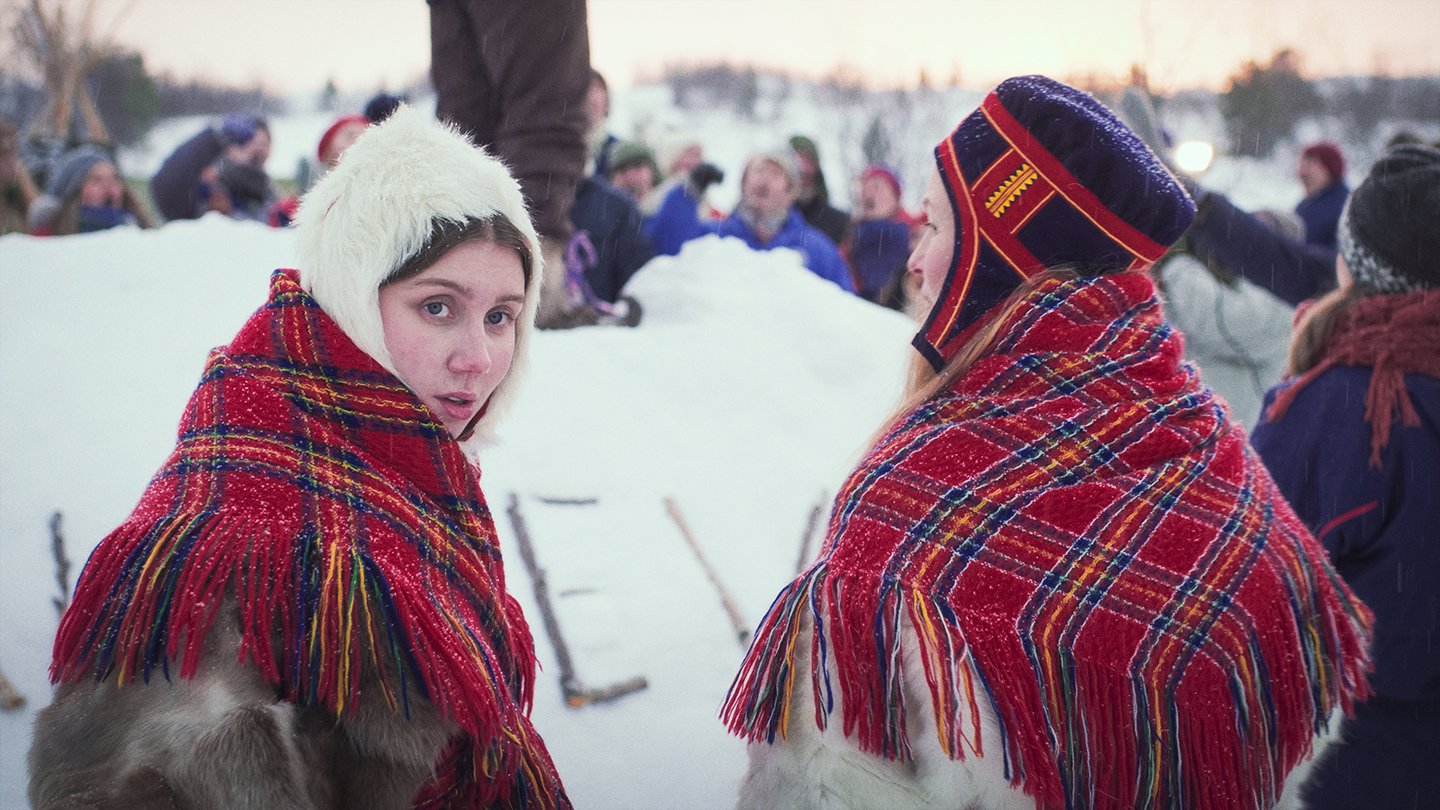Ole Giævers Ellos Eatnu – Let the River Flow (Ellos eatnu – la elva leve) is the winner of the FIPRESCI Prize in Gothenburg 2023.
Ellos Eatnu – Let the River Flow could have been a furious movie. Any Norwegians old enough, especially those of us who were young when the campaign to prevent the development of the Alta-Kautokeino watercourse was ongoing, remember the steep fronts. The burning commitment. The petitions. Stickers. Fundraising to cover the fines of those who participated in the civil disobedience actions in Alta, Finnmark, in the late summer of 1979 and the winter of 1981.
Ellos Eatnu – Let The River Flow is not a furious film. More than anger, there is a silent sorrow running through it, and it is read in Ester (Ella Marie Hætta Isaksen)’s face in the various stages she finds herself in throughout the film. As a newly qualified teacher, Ester comes home to Finnmark, and she has been given a temporary position in Alta. Through her cousin Mihkkel (Gard Emil Elvenes), she is dragged to the protest camp in Stilla and into the fight. She is reluctant, at first.
With the young woman as the main character and focal point, the Norwegian director Ole Giæver places some key elements in a story centered around the basis and consequences of the Alta campaign, but which extends beyond it. The fight against the development of the Alta-Kautokeino river system was a Sámi awakening. This awakening manifests itself in Ester’s face, in her body, from the starting point where she keeps her Sámi background hidden in the teacher’s room, until she goes on hunger strike in front of the Parliament. On the big screen, the process is perhaps a bit hasty. At the same time, the film – and Ella Marie Hætta Isaksen – make it clear that it is a painful and contradictory battle, inwardly and outwardly, in her family and community. In this way, threads are drawn to a more than century-old process of Norwegianisation, to state abuse, racism, discrimination, contempt and self-loathing. The latter sometimes leads to fatal outcomes. Here lies some of the film’s grief.
That’s not to say this is a dark film. It is an honest film that dares to enter into a complex matter, with conflicts and elements that are not necessarily gone, forty years later. Ellos Eatnu – Let The River Flow is sometimes also a beautiful movie. With Marius Matzow Gulbrandsen behind the camera, Giæver gives us small breathers with pictures of Finnmark in changing seasons. They also serve as an illustration of what the struggle was about: nature and natural resources as a basis for existence. Beautiful is also the portrayal of Ester’s grandmother, quietly brought into the story as a bearer of tradition and a fixed point of reference. Singer and musician Ella Marie Hætta Isaksen makes an impressive film debut in the role of Ester. Her acting contains both restrained and explosive emotions, and everything feels real and believable.
Ole Giæver has previously made good, often somewhat strange films in a smaller format, such as The Summer’s House (Sommerhuset, 2008), The Mountain (Fjellet, 2011), Out of Nature (Mot naturen, 2014), and From the Balcony, (Fra balkongen, 2017). This time, both the format and the theme are of a far greater scope.
I viewed and reviewed the film when it opened at the Tromsø International Film Festival in January this year, and was excited to see how it would be received by jury members who have no knowledge of the Alta struggle, of Norwegian history and the Norwegian state’s treatment of the Sámi population. The reactions to the film and the director’s way of treating the conflict through focusing on Ester, show that Giæver and Isaken succeed extremely well in conveying a story and events that have universal appeal and equivalents in the way indigenous peoples have been oppressed in other countries and continents.
The struggle to prevent the development of the Alta-Kautokeino river system was about environmental protection, reindeer husbandry and Sámi rights. Environmental protection was lost, but Sámi pride and identity were revitalized, and Norwegian Sami policy reformed. During the 1980s came a new Sámi law, a separate constitutional clause on Sámi language, culture and society, and the Sámi Parliament, which opened in 1989, two years after the Alta Dam opened.
The campaigners lost the battle against the development, but Norway was changed as a society. The civil disobedience struggle not only changed the consciousness of the Sámi and strengthened their identity and rights. Norwegian society also gained increased awareness of Sámi culture and Sámi rights.
Britt Sørensen
Edited by Savina Petkova
© FIPRESCI 2023

